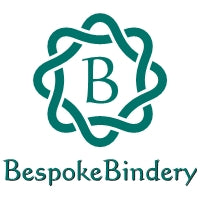A Little About the Leather in our Hand Crafted Journals
A quick guide to the leathers we use for our hand crafted leather journals and notebooks.
For our handcrafted leather journals, we look for the perfect combination of strength, colour and (of course) a beautiful finish.
There is a huge variety of leather types – and we won’t cover them all here! We’ll concentrate on the leathers we use in our journals and notebooks. We have a fabulous leather supplier who knows the kind of product we like to use and occasionally sends us something different for us to try!
Leather can be “top-grain” or “split”. We only use top grain – this is the strongest layer. Second and third “splits” are less robust.
Our leather journals are created from one of the following types of finish:
Aniline leather - the unique surface characteristics of the hide remain visible. You can usually see the different textures and lines and a hide can be a combination of very textured and quite smooth. Aniline leather is coloured with dye. A light surface coating may be applied to enhance its appearance and offer slight protection against spillages and soiling.
Semi-aniline leather is more durable than aniline whilst still retaining a natural appearance. The increased durability is provided by the application of a light surface coating which contains a small amount of pigment. This ensures consistent colour and imparts some stain resistance.
Pigmented Leather is available in a huge range of colours. It’s surface coating contains pigments and resists scuffing and fading.
Pull-up leather
(also known as waxy or oily pull-up) A leather with a natural appearance which lightens in colour when stretched during wear to produce a unique worn-in effect with time.
Veg-tanned leather
the leather is processed in a more traditional way. It tends to be thicker and smoother and can be dyed or embossed with a finish and will soften and darken over time.
Within the categories above, you will find:
Full grain The grain surface is left intact before applying the surface coating.
Corrected grain The grain surface is sanded or buffed to remove imperfections before the surface coating is applied. A decorative grain pattern may then embossed into the surface.
Head back to our Collection page to see how they have turned out!
